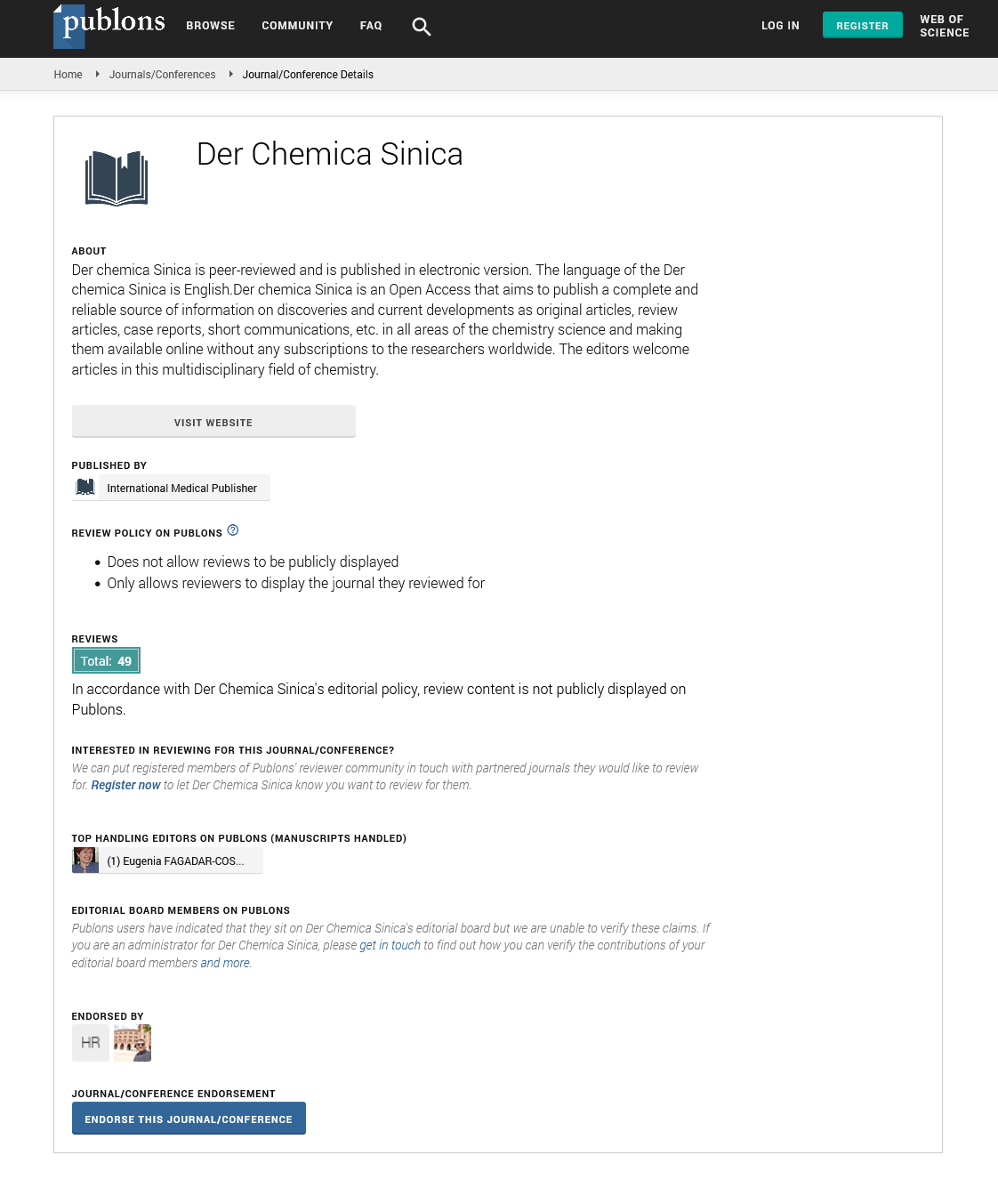ISSN : 0976-8505
Der Chemica Sinica
Abstract
Structural Characteristics and Fibrinolytic Property of Rediscovering Rare Compounds from Polar-Derived Strain of Marine Fungi Geomyces Pannorum
In the present study, fibrinolytic compounds were screened from marine microorganisms. Fungi and actinomycetes, Geomyces sp., Penicillium sp., and Aureobasidium pullulans, etc, were evaluated for their effects on plasminogen using a natural marine fibrinolytic compound FGFC1 as a positive control. It is the first report that Geomyces pannorum has the fibrinolytic activity in vitro. Six compounds of metabolites from Geomyces pannorum, tridec-1-ene (1), methyl (5Z,9Z)-octadeca-5,9-dienoate (2), (E)-icos-4-ene (3), hexyl 3-(3,5-di-tert-butyl-4-hydroxyphenyl) propanoate (4), 5α,8α-epidioxy ergosta-6,22-diene-3β-ol (5) and dibutyl phthalate (6), were isolated and their structures were elucidated by 1H NMR, 13C NMR, 1H–1HCOSY, HMBC, HMQC and MS spectrum. They were identified as long chain fatty acid, sterol and aromatic hydrocarbon, whose fibrinolytic activities were estimated. The results showed that rediscovering rare compounds 2, 3, 5 and 6 could potentially activate the plasminogen and it also showed moderate fibrinolytic activities in vitro with EC50 values of 120.0, 181.3, 200.0 and 179.7 μg/mL, respectively. Accordingly, the results disclosed that Geomyces sp. might have abundant and cultivable microorganisms with potential metabolites for antithrombotic drugs application in biopharmaceutical industries.
Author(s): Guo R Hua, Duan Dong, Wang S Jun, Fu Qiang, Bao Bin, WU W Hui
Abstract | Full-Text | PDF
Share This Article
Google Scholar citation report
Citations : 6019
Der Chemica Sinica received 6019 citations as per Google Scholar report
Der Chemica Sinica peer review process verified at publons
Abstracted/Indexed in
- Google Scholar
- Open J Gate
- Genamics JournalSeek
- China National Knowledge Infrastructure (CNKI)
- Directory of Research Journal Indexing (DRJI)
- Publons
- MIAR
- International Committee of Medical Journal Editors (ICMJE)
- Serials Union Catalogue (SUNCAT)
- Geneva Foundation for Medical Education and Research
- Secret Search Engine Labs
- Euro Pub
- CAS (Chemical Abstracting Services)
- University of Barcelona
Open Access Journals
- Aquaculture & Veterinary Science
- Chemistry & Chemical Sciences
- Clinical Sciences
- Engineering
- General Science
- Genetics & Molecular Biology
- Health Care & Nursing
- Immunology & Microbiology
- Materials Science
- Mathematics & Physics
- Medical Sciences
- Neurology & Psychiatry
- Oncology & Cancer Science
- Pharmaceutical Sciences
